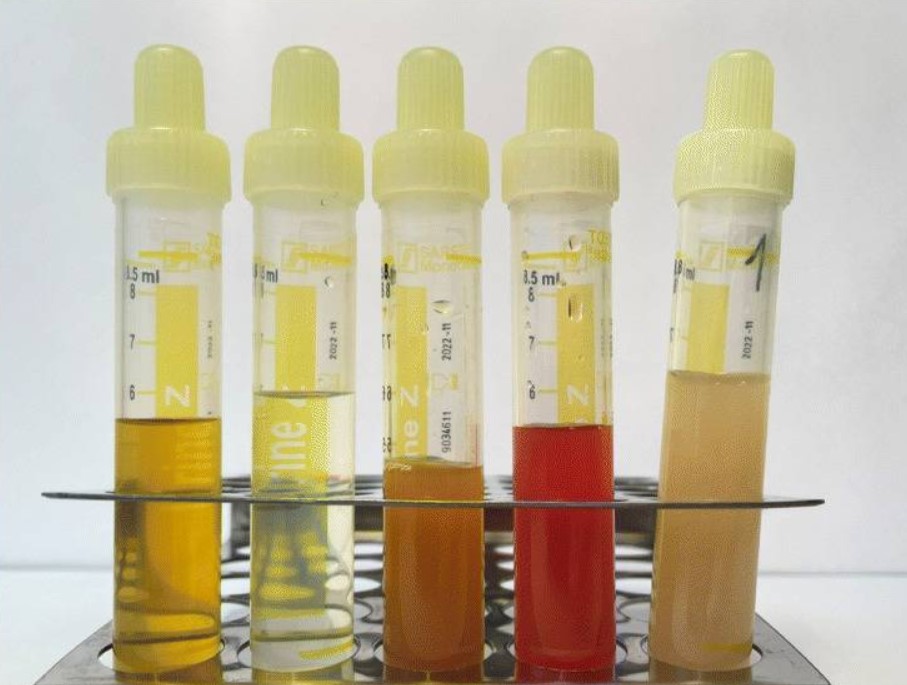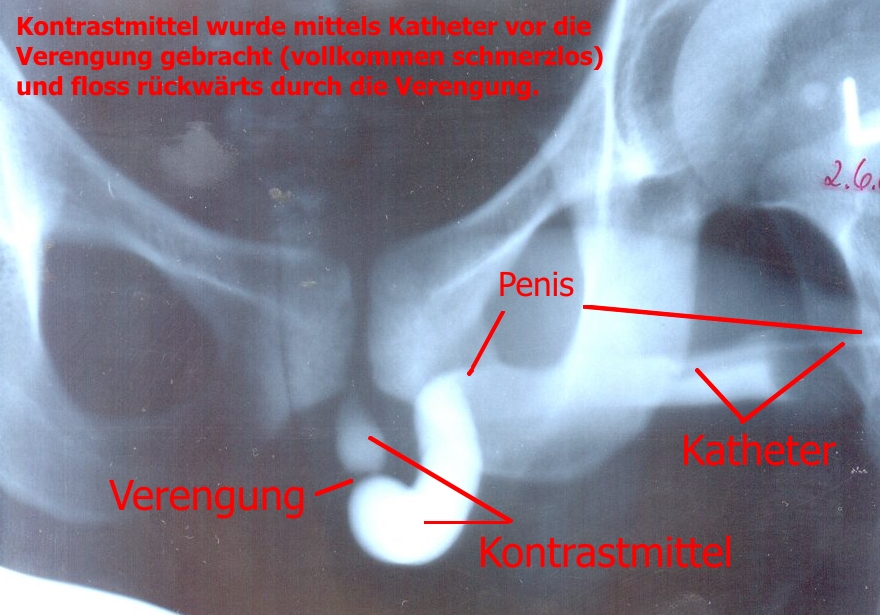|
Lower Urinary Tract Symptoms
Lower urinary tract symptoms (LUTS) refer to a group of clinical symptoms involving the bladder, urinary sphincter, urethra and, in men, the prostate. The term is more commonly applied to menover 40% of older men are affectedbut lower urinary tract symptoms also affect women. The condition is also termed prostatism in men, but LUTS is preferred. Symptoms and signs Symptoms can be categorised into: Filling (storage) or irritative symptoms * Increased frequency of urination * Increased urgency of urination * Urge incontinence * Excessive passage of urine at night Voiding or obstructive symptoms * Poor stream (unimproved by straining) * Hesitancy (worsened if bladder is very full) * Terminal dribbling * Incomplete voiding * Urinary retention * Overflow incontinence (occurs in chronic retention) * Episodes of near retention As the symptoms are common and non-specific, LUTS is not necessarily a reason to suspect prostate cancer. Large studies of patients have also failed to s ... [...More Info...] [...Related Items...] OR: [Wikipedia] [Google] [Baidu] |
Prostatic Stent
A prostatic stent is a stent used to keep open the male urethra and allow the passing of urine in cases of prostatic obstruction and lower urinary tract symptoms (LUTS). Prostatic obstruction is a common condition with a variety of causes. Benign prostatic hyperplasia (BPH) is the most common cause, but obstruction may also occur acutely after treatment for BPH such as transurethral needle ablation of the prostate (TUNA), transurethral resection of the prostate (TURP), transurethral microwave thermotherapy (TUMT), prostate cancer or after radiation therapy. Classification There are two types of prostatic stent: temporary and permanent. Although a permanent prostatic stent is not a medical treatment, it falls under the classification of a surgical procedure. Placement of a permanent prostatic stent is carried out as an outpatient treatment under local, topical or spinal anesthesia and usually takes about 15–30 minutes. A temporary prostatic stent can be inserted in a simila ... [...More Info...] [...Related Items...] OR: [Wikipedia] [Google] [Baidu] |
Detrusor Muscle
The detrusor muscle, also detrusor urinae muscle, muscularis propria of the urinary bladder and (less precise) muscularis propria, is smooth muscle found in the wall of the bladder. The detrusor muscle remains relaxed to allow the bladder to store urine, and contracts during urination to release urine. Related are the urethral sphincter muscles which envelop the urethra to control the flow of urine when they contract. Structure The fibers of the detrusor muscle arise from the posterior surface of the body of the pubis in both sexes (musculi pubovesicales), and in the male from the adjacent part of the prostate. These fibers pass, in a more or less longitudinal manner, up the inferior surface of the bladder, over its apex, and then descend along its fundus to become attached to the prostate in the male, and to the front of the vagina in the female. At the sides of the bladder the fibers are arranged obliquely and intersect one another. The three layers of muscles are a ... [...More Info...] [...Related Items...] OR: [Wikipedia] [Google] [Baidu] |
Ultrasound
Ultrasound is sound with frequency, frequencies greater than 20 Hertz, kilohertz. This frequency is the approximate upper audible hearing range, limit of human hearing in healthy young adults. The physical principles of acoustic waves apply to any frequency range, including ultrasound. Ultrasonic devices operate with frequencies from 20 kHz up to several gigahertz. Ultrasound is used in many different fields. Ultrasonic devices are used to detect objects and measure distances. Ultrasound imaging or sonography is often used in medicine. In the nondestructive testing of products and structures, ultrasound is used to detect invisible flaws. Industrially, ultrasound is used for cleaning, mixing, and accelerating chemical processes. Animals such as bats and porpoises use ultrasound for locating prey and obstacles. History Acoustics, the science of sound, starts as far back as Pythagoras in the 6th century BC, who wrote on the mathematical properties of String instrument ... [...More Info...] [...Related Items...] OR: [Wikipedia] [Google] [Baidu] |
Urinalysis
Urinalysis, a portmanteau of the words ''urine'' and ''analysis'', is a Test panel, panel of medical tests that includes physical (macroscopic) examination of the urine, chemical evaluation using urine test strips, and #Microscopic examination, microscopic examination. Macroscopic examination targets parameters such as color, clarity, odor, and specific gravity; urine test strips measure chemical properties such as pH, glucose concentration, and protein levels; and microscopy is performed to identify elements such as Cell (biology), cells, urinary casts, Crystalluria, crystals, and organisms. Background Urine is produced by the filtration of blood in the kidneys. The formation of urine takes place in microscopic structures called nephrons, about one million of which are found in a normal human kidney. Blood enters the kidney though the renal artery and flows through the kidney's vasculature into the Glomerulus (kidney), glomerulus, a tangled knot of capillaries surrounded by Bow ... [...More Info...] [...Related Items...] OR: [Wikipedia] [Google] [Baidu] |
International Prostate Symptom Score
The International Prostate Symptom Score (IPSS) is an eight-question written screening tool used to screen for, rapidly diagnose, track the symptoms of, and suggest management of the lower urinary tract symptoms of benign prostatic hyperplasia (BPH). It contains seven questions related to symptoms related to BPH and one question related to the patient's perceived quality of life. Created in 1992 by the American Urological Association, it originally lacked the eighth quality of life question, hence its original name: the American Urological Association symptom score (AUA-7). World Health Organization International Consultation on BPH adopted the "eight question" index and labeled it the IPSS. The seven questions relating to symptoms experienced in the last month include feeling of incomplete bladder emptying, frequency of urination, intermittency of urine stream, urgency of urination, weak stream, straining and waking at night to urinate. The IPSS was designed to be self-a ... [...More Info...] [...Related Items...] OR: [Wikipedia] [Google] [Baidu] |
Maria De Iorio
Maria De Iorio (born 1972) is an Italian biostatistician whose research applies Bayesian statistics and nonparametric statistics in genomics and bioinformatics. She is a professor at the National University of Singapore. Education and career De Iorio has a laurea in economics from Bocconi University in Italy. She completed a PhD in 2001 at Duke University in the US. Her dissertation, ''Markov Random Fields at Multiple Resolutions and an ANOVA Model for Dependent Random Measures'', was supervised by Michael L. Lavine. After postdoctoral research at the University of Oxford in England, she became a lecturer and later senior lecturer at Imperial College London beginning in 2003, in the Department of Epidemiology and Public Health. She moved to University College London in 2011, as reader in statistics, and became professor of biostatistics there in 2015. She moved to the National University of Singapore in 2018, as head of a statistics program at Yale-NUS College. She added an ... [...More Info...] [...Related Items...] OR: [Wikipedia] [Google] [Baidu] |
Urinary Tract Infection
A urinary tract infection (UTI) is an infection that affects a part of the urinary tract. Lower urinary tract infections may involve the bladder (cystitis) or urethra (urethritis) while upper urinary tract infections affect the kidney (pyelonephritis). Symptoms from a lower urinary tract infection include suprapubic pain, painful urination (dysuria), frequency and urgency of urination despite having an empty bladder. Symptoms of a kidney infection, on the other hand, are more systemic and include fever or Abdominal pain, flank pain usually in addition to the symptoms of a lower UTI. Rarely, the urine may appear Hematuria, bloody. Symptoms may be vague or non-specific at the extremities of age (i.e. in patients who are very young or old). The most common cause of infection is ''Escherichia coli'', though other bacteria or fungi may sometimes be the cause. Risk factors include female anatomy, sexual intercourse, diabetes mellitus, diabetes, obesity, catheterisation, and famil ... [...More Info...] [...Related Items...] OR: [Wikipedia] [Google] [Baidu] |
Urethral Stricture
A urethral stricture is a narrowing of the urethra, the tube connected to the Urinary bladder, bladder that allows urination. The narrowing reduces the flow of urine and makes it more difficult or even painful to empty the bladder. Urethral stricture is caused by injury, instrumentation, infection, and certain non-infectious forms of urethritis. The condition is more common in men due to their longer urethra. Signs and symptoms The hallmark sign of urethral stricture is a weak urinary stream. Other symptoms include: * Splaying of the urinary stream * Urinary frequency * Urinary urgency * Straining to urinate * Dysuria, Pain during urination * Urinary tract infection * Prostatitis * Inability to completely empty the bladder. Some people with severe urethral strictures are completely unable to urinate. This is referred to as acute urinary retention, and is a medical emergency. Hydronephrosis and kidney failure may also occur. Complications * Urinary retention * Prostatitis * ... [...More Info...] [...Related Items...] OR: [Wikipedia] [Google] [Baidu] |
Prostatitis
Prostatitis is an umbrella term for a variety of medical conditions that incorporate bacterial and non-bacterial origin illnesses in the pelvic region. In contrast with the plain meaning of the word (which means "inflammation of the prostate"), the diagnosis may not always include inflammation. Prostatitis is classified into acute, chronic, asymptomatic inflammatory prostatitis, and chronic pelvic pain syndrome. In the United States, prostatitis is diagnosed in 8% of all male urologist visits and 1% of all primary care physician visits for male genitourinary symptoms. Classification The term ''prostatitis'' refers to inflammation of the tissue of the prostate gland. It may occur as an appropriate physiological response to an infection, or it may occur in the absence of infection, or there may be no inflammation of the prostate at all. In 1999, the National Institutes of Health devised a new classification system. For more specifics about each type of prostatitis, including info ... [...More Info...] [...Related Items...] OR: [Wikipedia] [Google] [Baidu] |
Cauda Equina Syndrome
Cauda equina syndrome (CES) is a condition that occurs when the bundle of nerves below the end of the spinal cord known as the cauda equina is damaged. Signs and symptoms include low back pain, sciatica, pain that radiates down the leg, numbness around the anus, and loss of bowel or bladder control. Onset may be rapid or gradual. The cause is usually a disc herniation in the lumbar spine, lower region of the back. Other causes include spinal stenosis, cancer, major trauma, trauma, epidural abscess, and epidural hematoma. The diagnosis is suspected based on symptoms and confirmed by medical imaging such as MRI or CT scan. CES is generally treated surgically via laminectomy. Sudden onset is regarded as a medical emergency requiring prompt surgical decompression, with delay causing permanent loss of function. Permanent bladder problems, sexual dysfunction or numbness may occur despite surgery. A poor outcome occurs in about 20% of people despite treatment. About 1 in 70,000 people ... [...More Info...] [...Related Items...] OR: [Wikipedia] [Google] [Baidu] |




